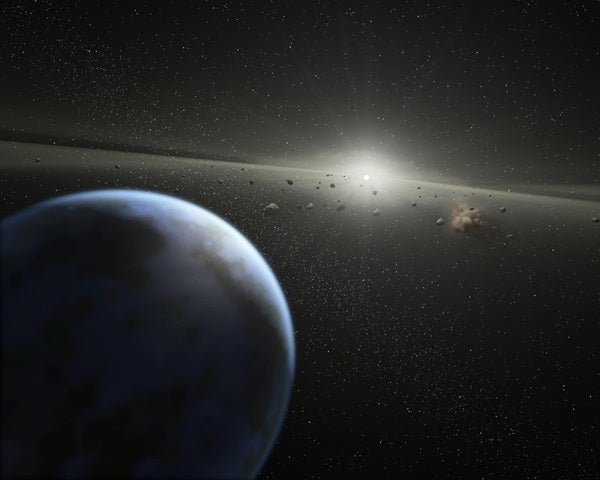An international team of astronomers has discovered compelling evidence that rocky planets are commonplace in our galaxy. Lead researcher Jay Farihi, Leicester University, United Kingdom, and colleagues surveyed white dwarfs, the compact remnants of stars that were once like our Sun, and found that many show signs of contamination by heavier elements and possibly even water, improving the prospects for extraterrestrial life.
White dwarf stars (more than 90%) of all stars in the Milky Way, including our Sun. Because they should have essentially pure hydrogen or pure helium atmospheres, if heavier elements — in astronomy described as “metals,” examples including calcium, magnesium, and iron — are found, then these must be external pollutants. For decades, scientists believed that the interstellar medium, the tenuous gas between the stars, was the source of metals in these polluted white dwarfs.
Farihi and his team used data from the Sloan Digital Sky Survey (SDSS), a project that aims to survey the sky in infrared light, imaging more than 100 million objects and following up one million of these by obtaining their spectra (dispersing the light by color).
By examining the positions, motions, and spectra of the white dwarfs identified in the SDSS, Farihi and his team show that the interstellar medium as the source is no longer a viable theory. Instead, rocky planetary debris is almost certainly the culprit in most or all cases.
The new work indicates that at least 3 percent and perhaps as much as 20 percent of all white dwarfs are contaminated in this way, with the debris most likely in the form of rocky minor planets with a total mass of about that of an 87-mile-diameter (140 kilometers) asteroid.
This implies that a similar proportion of stars like our Sun, as well as stars that are a little more massive like Vega and Fomalhaut, build terrestrial planetary systems. Astronomers are thus playing the role of celestial archaeologists by studying the “ruins” of rocky planets and their building blocks.
The scientists also measured the composition of the contaminating planetary debris through its chemical signature that stands out in the otherwise pure atmosphere of the white dwarfs.
Excitingly, it appears a significant fraction of these stars are polluted with material that contained water, with important implications for the frequency of habitable planets around other stars. If internal water is present in a substantial fraction of asteroids around other stars like those that contaminated the white dwarfs, it is conceivable that at least simple life may be common throughout the galaxy.
“In our own solar system with at least one watery, habitable planet, the asteroid belt — the leftover building blocks of the terrestrial planets — is several percent water by mass,” said Farihi. “From our study of white dwarfs, it appears there are basic similarities found among asteroid-like objects around other stars; hence, it is likely a fraction of these white dwarfs once harbored watery planets and possibly life.”










